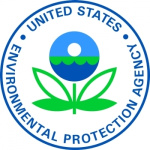- Settore: Government
- Number of terms: 11955
- Number of blossaries: 0
- Company Profile:
U.S. Environmental Protection Agency (EPA) is a federal agency responsible for the development and enforcement of regulations for human health and environment protection. The agency researches and sets standards for environmental programs and delegates. It was founded in 1970 following the proposal ...
Any process, activity or mechanism which removes a greenhouse gas, an aerosol or a precursor of a greenhouse gas or aerosol from the atmosphere.
Industry:Natural environment
El Niño, in its original sense, is a warm water current that periodically flows along the coast of Ecuador and Peru, disrupting the local fishery. This oceanic event is associated with a fluctuation of the intertropical surface pressure pattern and circulation in the Indian and Pacific Oceans, called the Southern Oscillation. This coupled atmosphere-ocean phenomenon is collectively known as El Niño-Southern Oscillation. During an El Niño event, the prevailing trade winds weaken and the equatorial countercurrent strengthens, causing warm surface waters in the Indonesian area to flow eastward to overlie the cold waters of the Peru current. This event has great impact on the wind, sea surface temperature, and precipitation patterns in the tropical Pacific. It has climatic effects throughout the Pacific region and in many other parts of the world. The opposite of an El Niño event is called La Niña.
Industry:Natural environment
Number of parts of a chemical found in one million parts of a particular gas, liquid, or solid.
Industry:Natural environment
Land waste disposal site in which waste is generally spread in thin layers, compacted, and covered with a fresh layer of soil each day.
Industry:Natural environment
Land degradation in arid, semi-arid, and dry sub-humid areas resulting from various factors, including climatic variations and human activities. Further, the UNCCD (The United Nations Convention to Combat Desertification) defines land degradation as a reduction or loss, in arid, semi-arid, and dry sub-humid areas, of the biological or economic productivity and complexity of rain-fed cropland, irrigated cropland, or range, pasture, forest, and woodlands resulting from land uses or from a process or combination of processes, including processes arising from human activities and habitation patterns, such as: (i) soil erosion caused by wind and/or water; (ii) deterioration of the physical, chemical and biological or economic properties of soil; and (iii) long-term loss of natural vegetation. Conversion of forest to non-forest.
Industry:Natural environment
Group of countries included in Annex I (as amended in 1998) to the United Nations Framework Convention on Climate Change, including all the developed countries in the Organization of Economic Co-operation and Development, and economies in transition. By default, the other countries are referred to as Non-Annex I countries. Under Articles 4.2 (a) and 4.2 (b) of the Convention, Annex I countries commit themselves specifically to the aim of returning individually or jointly to their 1990 levels of greenhouse gas emissions by the year 2000.
Industry:Natural environment
Variations in the mean state and other statistics (such as standard deviations or statistics of extremes) of the climate on all time and space scales beyond that of individual weather events. Natural variations in climate over time are caused by internal processes of the climate system, such as El Niño, as well as changes in external influences, such as volcanic activity and variations in the output of the sun.
Industry:Natural environment
A plausible and often simplified description of how the future may develop based on a coherent and internally consistent set of assumptions about driving forces and key relationships.
Industry:Natural environment
A colorless gas soluble in alcohol and ether, slightly soluble in water. A very powerful greenhouse gas used primarily in electrical transmission and distribution systems and as a dielectric in electronics. The global warming potential of SF6 is 22,800. This GWP is from the IPCC's Fourth Assessment Report (AR4).
Industry:Natural environment
